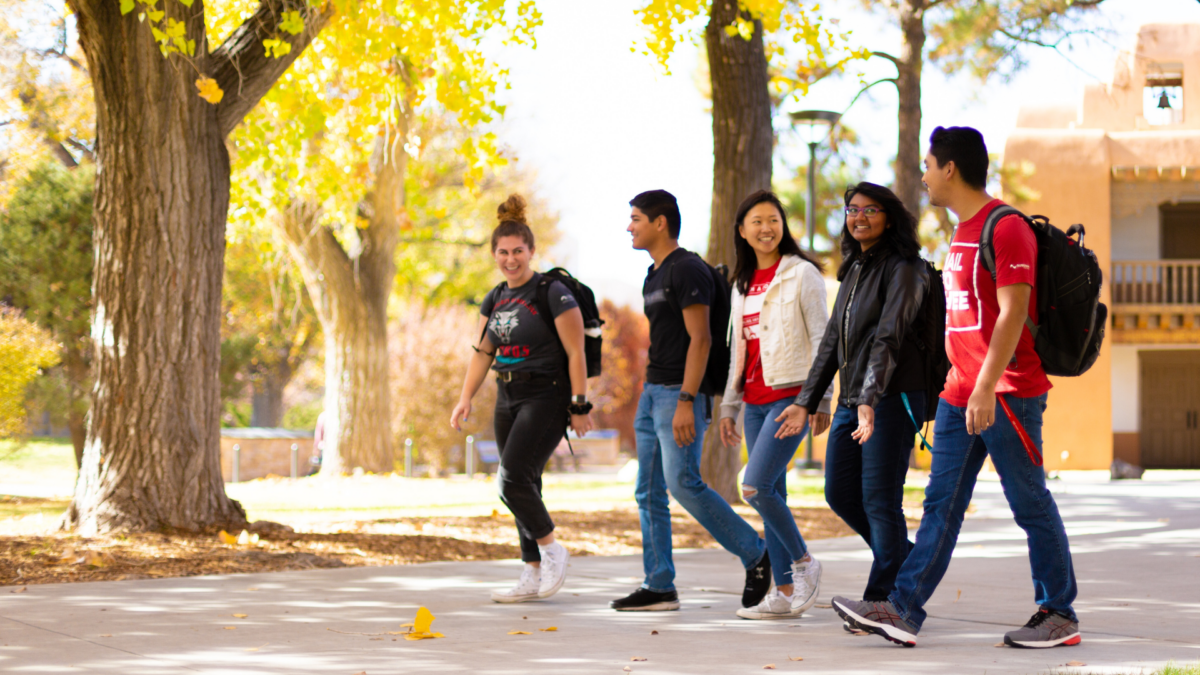Five-Year, Data-Driven Program at Minority-Serving Institutions Yields Significant Success in Student Learning and Participation
Published May 13, 2014
Washington, D.C., March 13, 2008—As the country becomes more racially and ethnically diverse, it is imperative that institutions of higher education continually work to strengthen the academic success of students of color. Data collection linked with effective campus change efforts are crucial factors in helping institutions make informed decisions to bring about positive student learning experiences. This is especially true for the nation’s 350 Minority-Serving Institutions (MSIs)—including Hispanic-Serving Institutions (HSIs), Historically Black Colleges and Universities (HBCUs), and Tribal Colleges and Universities (TCUs)—that annually serve about one third of all students of color.
To help address the issue of student engagement and success, the Building Engagement and Attainment for Minority Students (BEAMS) initiative was created to support the important role MSIs play in facilitating minority students’ participation in and completion of higher education. Launched in 2003, BEAMS fostered data-based campus change initiatives at more than 100 HBCUs, HSIs, and TCUs. Participating institutions enhanced their capacity to collect and use data for institutional decision making and improve student success practices, which were key forces behind the schools’ campus change.
Several best practices have emerged from the participating institutions, which are outlined in a new monograph released today titled Increasing Student Success at Minority-Serving Institutions: Findings from the BEAMS Project. The publication, along with accompanying practice briefs detailing similar institutional change initiatives, also highlights the project’s key findings and lessons learned. This information is available for replication by institutions nationwide that are dedicated to creating positive change and improving their students’ collegiate experience.
“The BEAMS project is a remarkable accomplishment providing clear evidence that positive campus change and student success are possible when financial and other supportive resources are made available to institutions of higher education,” said IHEP Interim President and Senior Associate Thomas D. Parker, Ed.D. “We’ve learned that institutions place themselves in a precarious position when making campus change decisions based on assumptions of their students’ needs and concerns. Although it may be costly to implement and maintain, data collection help institutions make the right decisions to improve the postsecondary experience of all students.”
Some key findings and recommendations from the BEAMS’ monograph utilized to craft and implement effective student success initiatives include:
- Align data collection methods with institutional capacity. When planning for data collection, institutions need to ensure that the methods they use are consistent with their capacity to administer a survey and make follow-up requests for survey completion.
- Establish a strong team. Institutions that are serious about using data to craft change need to ensure that the persons involved in the project are dedicated to and can influence change.
- Link BEAMS work with a larger campus initiative. Teams need to consider how their project fits in with other campus or system-wide initiatives to more easily secure buy-in from various constituencies, increase the resources that are available for projects, and build long-term sustainability through a process of institutionalization.
- MSIs must make greater technology and staff investments in their institutional research and assessment offices. Institutional research and assessment offices are becoming increasingly more important to institutions that are committed to data-informed change. These offices need the technology and staff resources to gather and analyze institutional data and to work with other campus stakeholders to translate these data into information that notifies of campus practices and policies.
- State systems must continue to support and encourage data capacity building at their institutions. State systems should continue to take seriously the important role they play in helping to build data capacity at their institutions by providing resources and setting clear expectations for their institutions’ collection and use of data.
- The data capacity status of MSIs should be documented in a formal report. While the BEAMS project highlights some specific data capacity gaps at participating institutions, a more thorough study of this issue is needed to make claims about the status of data capacity at MSIs in general.
During 2003–07, BEAMS provided institutions financial support to help them make informed decisions based on the collection and analysis of data. Each BEAMS campus made a commitment to analyze the scope and character of its students’ engagement by participating in the National Survey of Student Engagement (NSSE) and to implement well-designed action plans to improve student engagement, learning, persistence, and success. The Summer Academy—an annual gathering of representatives from various colleges and universities for collaborative work aimed at increasing access and success in higher education—provided dedicated time for BEAMS teams to identify solutions to increase student engagement, retention, and graduation rates at their institutions.
BEAMS is a partnership between NSSE and the Alliance for Equity in Higher Education, which is managed by the Institute for Higher Education Policy (IHEP), and is supported by Lumina Foundation for Education. The American Association for Higher Education (AAHE) launched the project initially but management responsibilities were transferred to IHEP when AAHE closed in 2005. To join BEAMS, participating institutions were only required to be an accredited four-year institution and Alliance member upon submitting their application.
Today, IHEP kicks off a five-city national campaign to disseminate the BEAMS monograph at various participating institutions. Each event features a panel of experts who will discuss the project’s findings and recommendations. Event sites include the University of the District of Columbia (March 13), California State University—Dominguez Hills (March 25), Spelman College (March 28), University of Puerto Rico—Humacao (April 1), and University of the Incarnate Word (April 4).
The monograph, Increasing Student Success at Minority-Serving Institutions: Findings from the BEAMS Project, is available on IHEP’s Web site at www.ihep.org. Also, available online are the project’s eight practice briefs that focus on aligning multiple campus initiatives, campus leaders' support, co-curricular activities, collecting survey data for assessment, engagement among campus constituencies, faculty development, first-year programs, student support services technology, and writing across the curriculum.


